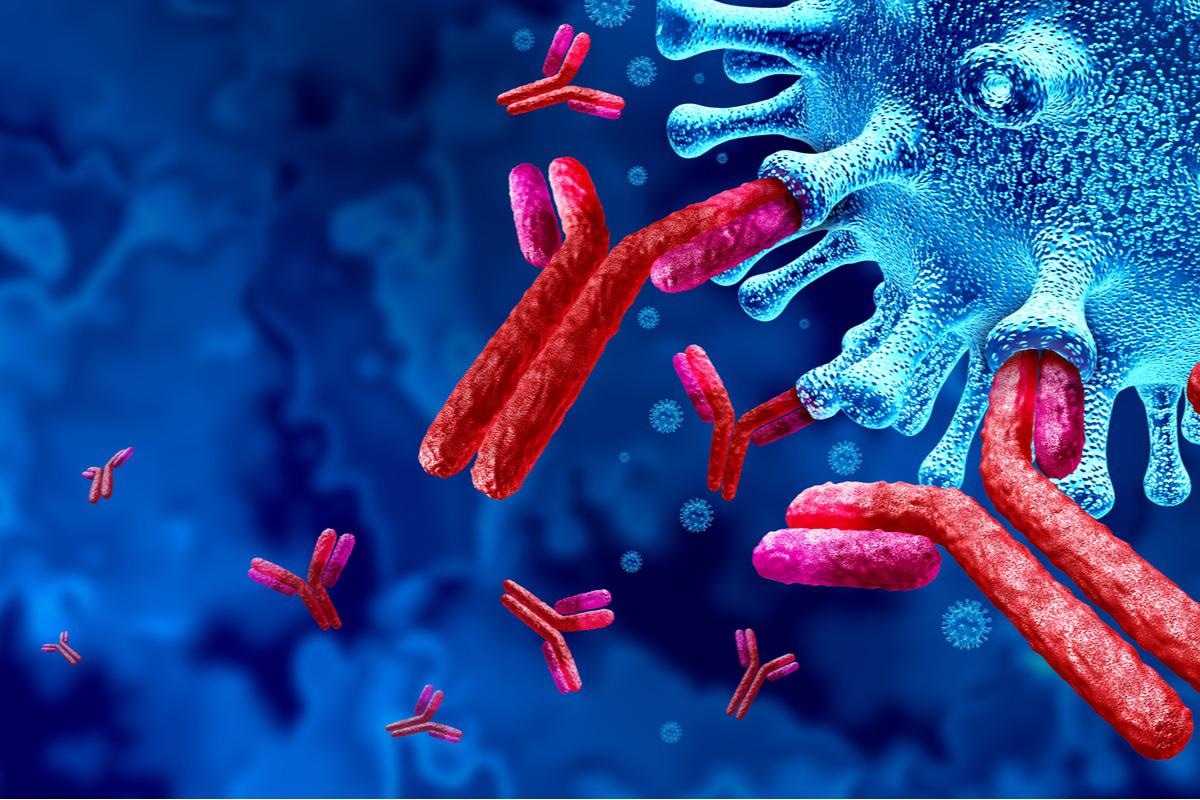A recent study posted to the Research Square* preprint server and currently under consideration at Archives of Virology described the changes in viral ribonucleic acid (RNA), the decline in viral load, and the immune response of severe acute respiratory syndrome coronavirus 2 (SARS-CoV-2)-infected patients.
 Study: Dynamics of SAR-CoV2 Viral Load Decline and Antibody Responses in COVID-19 Patients. Image Credit: Lightspring/Shutterstock
Study: Dynamics of SAR-CoV2 Viral Load Decline and Antibody Responses in COVID-19 Patients. Image Credit: Lightspring/Shutterstock

 *Important notice: Research Square publishes preliminary scientific reports that are not peer-reviewed and, therefore, should not be regarded as conclusive, guide clinical practice/health-related behavior, or treated as established information.
*Important notice: Research Square publishes preliminary scientific reports that are not peer-reviewed and, therefore, should not be regarded as conclusive, guide clinical practice/health-related behavior, or treated as established information.
Several studies have detected the presence of SARS-CoV-2 RNA in the respiratory samples of COVID-19-infected patients, which persists throughout the infection. The impact of this persistent RNA on the viral load shedding in the patients and the related human immune response elicited by the virus needs extensive research.
About the study
The present study examined SARS-CoV-2 isolated from respiratory samples and antibodies from serum samples of infected patients who were either mildly symptomatic or asymptomatic to assess the changes in the viral RNA as well as a reduction in viral load.
The study involved venous blood samples and nasopharyngeal swabs collected every three to seven days from 92 COVID-19 cases which were confirmed by reverse transcription-polymerase chain reaction (RT-PCR) assay. These samples were collected from hospitalized COVID-19 patients whose RT-PCR results were positive for over a week.
The isolation of SARS-CoV-2 was performed in a laboratory with biosafety level 3 using Vero E6 cell lines, cultured with 1% penicillin-streptomycin and 10% fetal bovine serum (FBS). Cytopathic effect (CPE) in the infected cells was observed and SARS-CoV-2 antigens were detected by performing an immunofluorescence assay. The monoclonal antibody of SARS-CoV/SARS-CoV-2 nucleocapsid rabbit was added to the infected Vero E6 cells to facilitate SARS-CoV-2 antigen detection. Titration by 50% tissue infectious dose (TCID50) was executed using the supernatant of the viral culture.
Viral transport media (VTM) was used to extract viral RNA and real-time RT-PCR was performed for the SAR-CoV-2 envelope (E) gene. Enzyme-linked immunosorbent assay (ELISA) was used to detect serological SARS-CoV-2 specific antibodies. The team also performed a microneutralization assay (micro NT) to detect SARS-CoV-2 neutralizing antibodies while cell-based ELISA detected the presence of SARS-CoV-2 antigens.
Results
The study results showed that out of the 92 samples collected from RT-PCR-positive COVID-19 patients, 34 samples belonged to male patients while 52 belonged to females of ages ranging from 20 to 63 years. Among these patients, 47 were asymptomatic while 45 had mild symptoms of COVID-19 infection, and a treatment regimen of either hydroxychloroquin, zinc, and durunavir/ritonavir or ivermectin and zinc was followed for all the patients.
The RT-PCR cycle threshold specific to the SARS-CoV-2 E gene for the samples collected in the first week ranged between 11.76 and 39.43, indicating the varied periods of sample collection from each participant. The average cycle threshold was 25.37±7.22 in the first week, 29.61±5.65 in the second week, and 33.08±4.66 in the third week. Changing rates of cycle threshold (∆Ct/day) of the E gene in samples with a high viral load was 1.47±1.98, 1.17±1.66, 0.08±1.03, and 0.21±0.45 in the first, second, and third week and after the third week, respectively, while the samples with a low viral load had a ∆Ct/day of 0.98±1.32, 0.37±1.49, 0.23±1.18, and -0.11±0.50 in the first, second, and third week and after the third week, respectively. Notably, the ∆Ct/day was higher in the second week in the high viral load samples as compared to the samples with a lower viral load.
A positive cytopathic effect was observed and confirmed using immunofluorescent staining performed with SAR-CoV-2 nucleoprotein-specific antibodies. Approximately 19% of the samples were positive for the presence of viral culture and consisted of a high viral load with an average RT-PCR cycle threshold of 19.69±5.27.
SAR-CoV-2 receptor-binding domain (RBD)-specific antibody was found in 66 samples among which 28 belonged to male patients while 38 belonged to female ones aged from 20 to 61 years. Around 35 patients were mildly symptomatic while 31 were asymptomatic and only 11 had viral culture. A total of 26 cases had no detectable SARS-CoV-2 RBD specific antibody; six of these samples were collected from males while 20 were from females, all belonging to the age group of 20 to 63 years. Among these, 10 patients had mild symptoms, 16 were asymptomatic while seven tested positive for the presence of viral culture.
Conclusion
The study findings showed a significant variation in the levels of SARS-CoV-2 viral load in COVID-19 patients as it steadily declined from the first week onward. Samples with persistent positive viral RNA did not exhibit viable virus shedding.
Also, various cases with undetectable SARS-CoV-2 RBD-specific antibodies tested positive for viral culture. The researchers concluded that a delay in an immune response against SARS-CoV-2 infection may cause the shedding of viable viruses.

 *Important notice: Research Square publishes preliminary scientific reports that are not peer-reviewed and, therefore, should not be regarded as conclusive, guide clinical practice/health-related behavior, or treated as established information.
*Important notice: Research Square publishes preliminary scientific reports that are not peer-reviewed and, therefore, should not be regarded as conclusive, guide clinical practice/health-related behavior, or treated as established information.